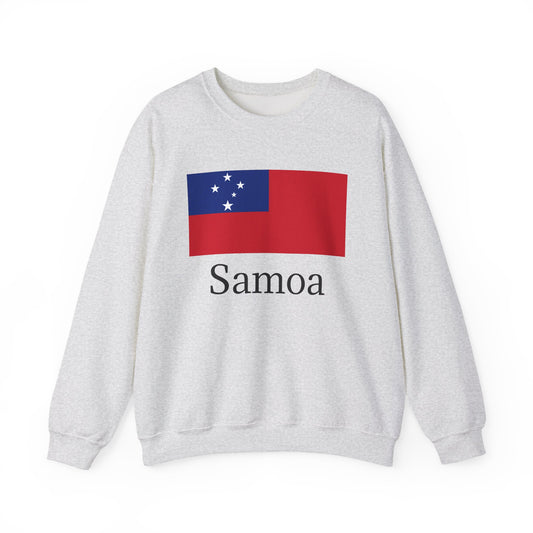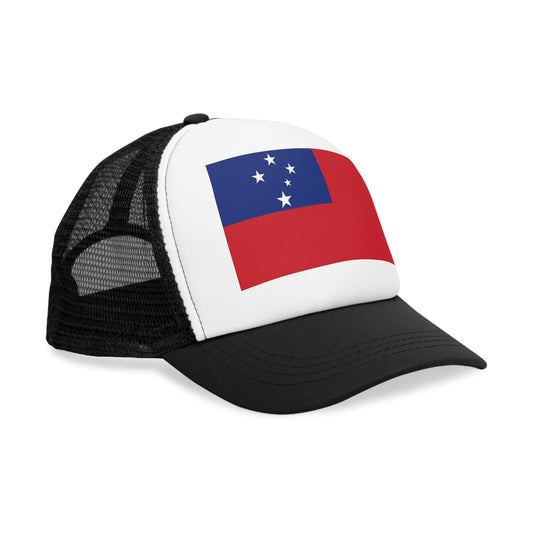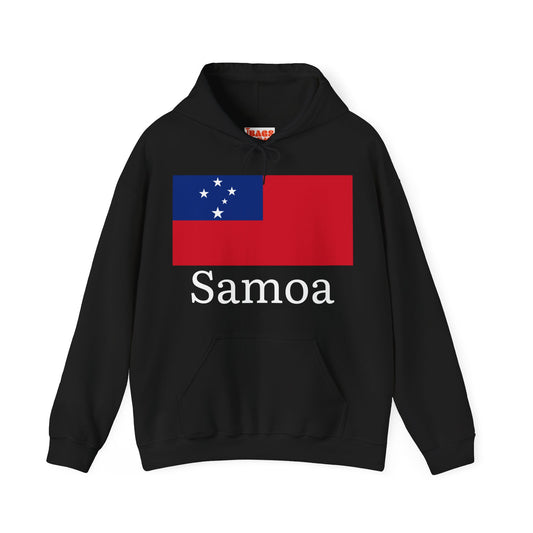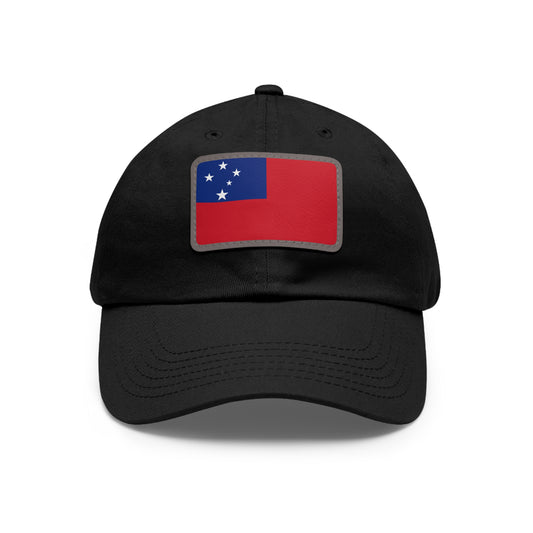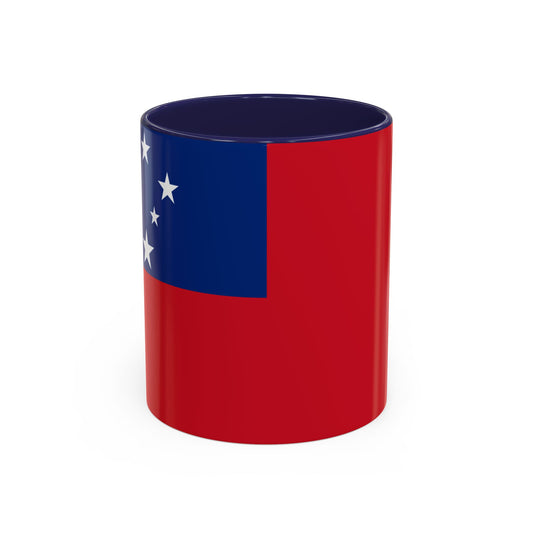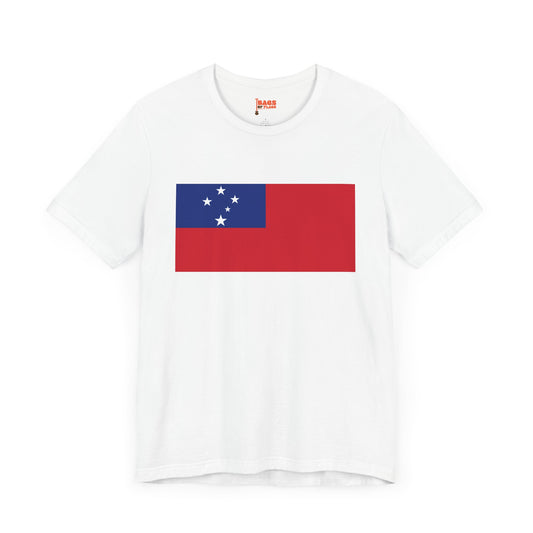-
Samoa Sweatshirt
Regular price $34.15 USDRegular priceUnit price / per -
Samoa Trucker Cap
Regular price $14.90 USDRegular priceUnit price / per -
Samoa Hoodies
Regular price $34.40 USDRegular priceUnit price / per -
Samoa Flag Sweatshirt
Regular price $34.15 USDRegular priceUnit price / per -
Samoa Pillow
Regular price $22.65 USDRegular priceUnit price / per -
Samoa Backpack
Regular price $59.79 USDRegular priceUnit price / per -
Samoa Leather Patch Hat
Regular price $18.85 USDRegular priceUnit price / per -
Samoa T-shirts
Regular price $22.79 USDRegular priceUnit price / per -
Samoa Flag Hoodies
Regular price $34.40 USDRegular priceUnit price / per -
Samoa Flag T-shirts
Regular price $22.79 USDRegular priceUnit price / per -
Samoa, Cook Islands, Tonga, and Solomon Islands Flags
Regular price $34.08 USDRegular priceUnit price / per -
Samoa Flag
Regular price From $34.12 USDRegular priceUnit price / per
Collection: Samoa
The Samoa flag symbolizes national pride and identity for the people of Samoa. With its unique design and rich symbolism, the flag has a long history that dates back to its adoption. We will explore the evolution of the Samoa flag, from its adoption to how it is used today.
Overview of the Samoa Flag

The flag of Samoa showcases a vibrant display of color and symbolism, featuring a broad red field and a distinct blue canton on the upper hoist side. Within this blue square rests the Southern Cross constellation, depicted through five white stars. This arrangement of stars is symbolic and positions the flag in the broader context of the Pacific region, drawing connections to the celestial navigation histories of Pacific Islanders. The colors chosen—red, blue, and white—are deeply symbolic and have been carefully selected to represent key aspects of Samoan culture and identity. The flag's layout, with its clear division between the red field and blue canton, provides a visual balance that reflects the harmony and resilience of Samoa. Including the Southern GROSS constellation aligns Samoa with its geographical and cultural neighbors while asserting its unique national identity.
Historical Context of the Samoa Flag
The journey of the Samoa flag toward its official adoption on February 24, 1949, intertwines with Samoa's path to sovereignty and independence. Before this date, Samoa was under the administrative control of New Zealand, a period that followed German and British colonial rule. The flag's adoption symbolized a critical step away from colonial dominance and towards establishing a national identity rooted in Samoa's cultural heritage and aspirations.
This pivotal year did not just see the adoption of a flag; it represented the dawn of Samoa's assertion of its place in the world as a sovereign nation. The design chosen for the flag was emblematic of this newfound independence, carrying meanings and symbols significant to Samoan culture and the island's historical and geographical context.
It's important to note that while the flag was adopted in 1949, Samoa's journey to complete independence continued for over a decade thereafter. It was in January 1, 1962, that Samoa became the first Polynesian nation to reestablish independence in the 20th century, a move that further solidified the flag's status as a symbol of national pride and autonomy. The flag, thus, is deeply intertwined with Samoa's struggle for and achievement of independence, serving as a constant reminder of the resilience and unity of the Samoan people.
Symbolism Behind the Samoa Flag

The flag of Samoa is steeped in rich symbolic meaning, deeply intertwined with the nation's culture and values. The dominant red background symbolizes bravery and sacrifice, highlighting the courage of Samoan warriors throughout history. It speaks to the heart of Samoan resilience, echoing the struggles and victories of its people. The blue canton, a beacon of freedom, mirrors the vast Pacific Ocean that cradles the islands, emphasizing Samoa's sovereignty and its people's deep connection to the sea.
This flag segment also houses the Southern Cross constellation, a symbolic navigator for the Samoan people and a nod to their adept celestial navigation skills passed down through generations. Each star in the constellation serves as a guiding light, representing hope, direction, and the enduring spirit of the Samoan people as they navigate the future while staying rooted in their rich heritage. Together, these elements encapsulate the essence of Samoa—its past struggles, connection to the natural world, and hopeful gaze into the future.
Current Relevance of the Samoa Flag
Today, the Samoa flag plays a vital role in the everyday lives of Samoans and the diaspora, marking its presence at a myriad of official functions, cultural celebrations, and international sporting events. Its vibrant colors and symbolic design are a source of immense pride, encapsulating the spirit and resilience of the Samoan people. The flag is typical during Independence Day celebrations on June 1, when the nation reflects on its journey to sovereignty and honors the values that have sustained its culture and traditions. It also takes a prominent place in military ceremonies, where the flag's display underscores the bravery and sacrifices of those who have served the nation.
In educational contexts, the flag is an educational tool, fostering a sense of national identity among young Samoans by connecting them with their history and cultural heritage. Moreover, amidst globalization, the flag remains a potent symbol of Samoa's unique identity, differentiating it from other nations and promoting a sense of belonging among its people.
Despite its universal acceptance, discussions around the flag occasionally arise, reflecting the evolving nature of national identity and the continuous dialogue about what symbols best represent the nation in the 21st century. These debates highlight the flag's ongoing relevance as not just a static symbol but as a living representation of Samoa's past, present, and aspirations for the future.
Additional Facts About the Samoa Flag
Respecting the Samoa flag comes with its own set of protocols that underscore its importance and the reverence with which it is held. Among these, a fundamental rule is ensuring that the flag is always displayed in a manner that prevents it from touching the ground, a practice seen as a mark of disrespect. When flown with other flags, the Samoa flag must occupy a position of prominence, ideally at the highest point to symbolize the nation's sovereignty and pride.
A lesser-known fact about the flag is its evolutionary aspect concerning the Southern Cross constellation depicted on it. Initially represented by four stars, a significant change occurred in 2000 when a fifth star was added. This addition was more than an aesthetic alteration; it signified the inclusion of an additional island within Samoa's territorial bounds, thus updating the flag to reflect changes in the nation's geographical makeup. This adaptability showcases the flag's role not only as a national emblem but also as a living document that evolves alongside the country it represents.


